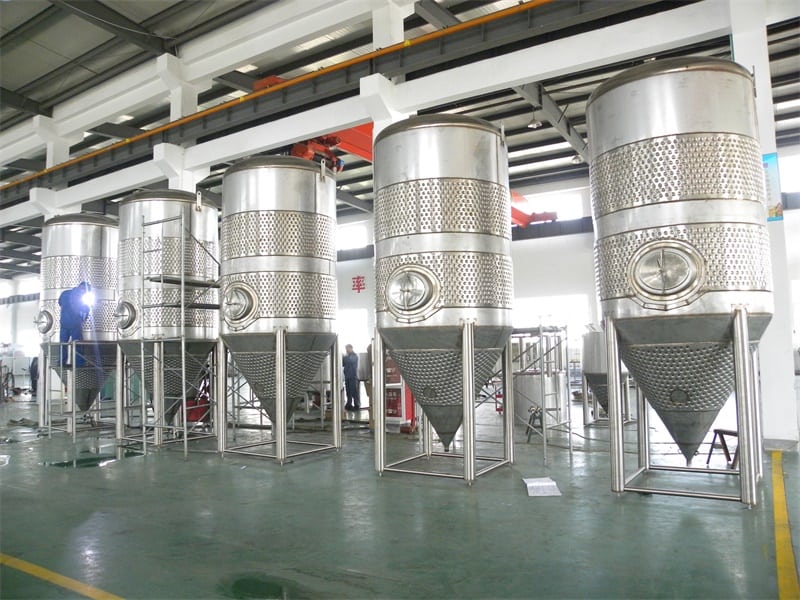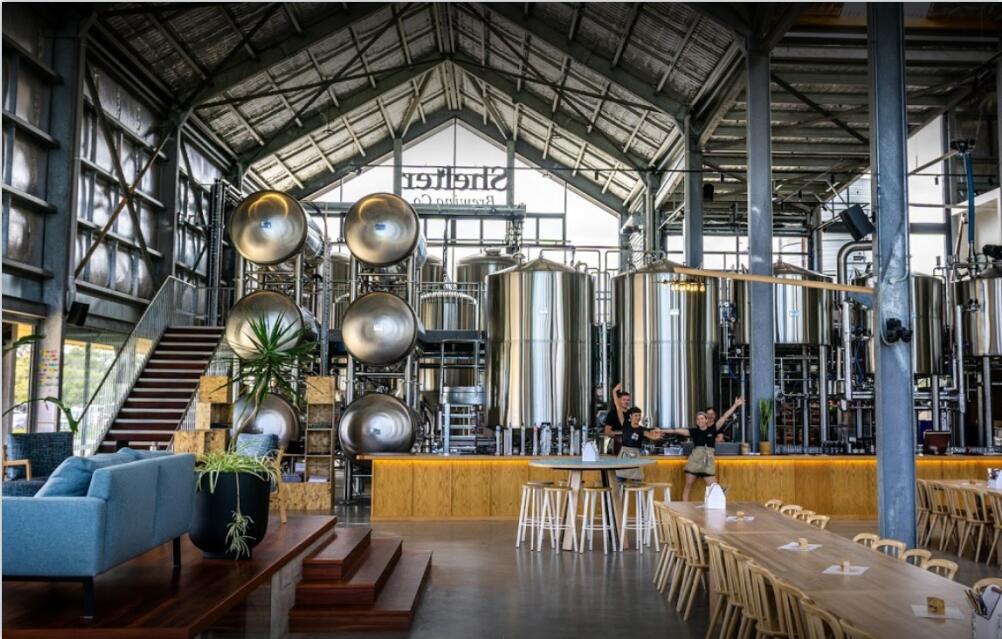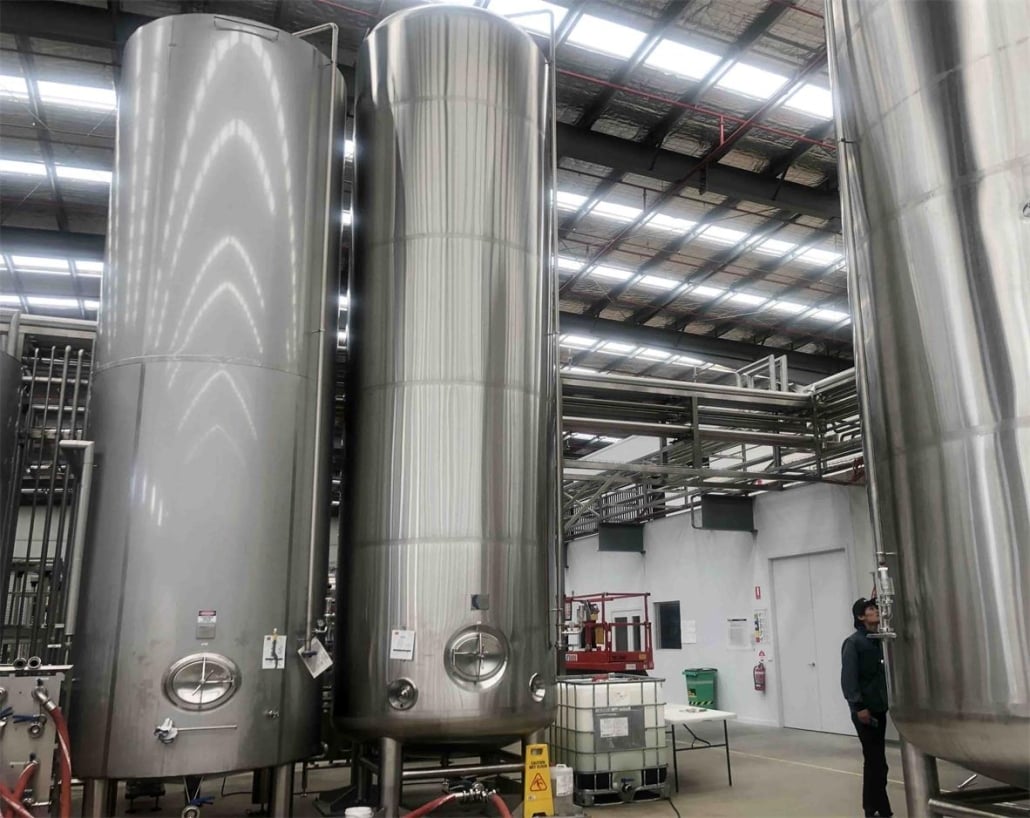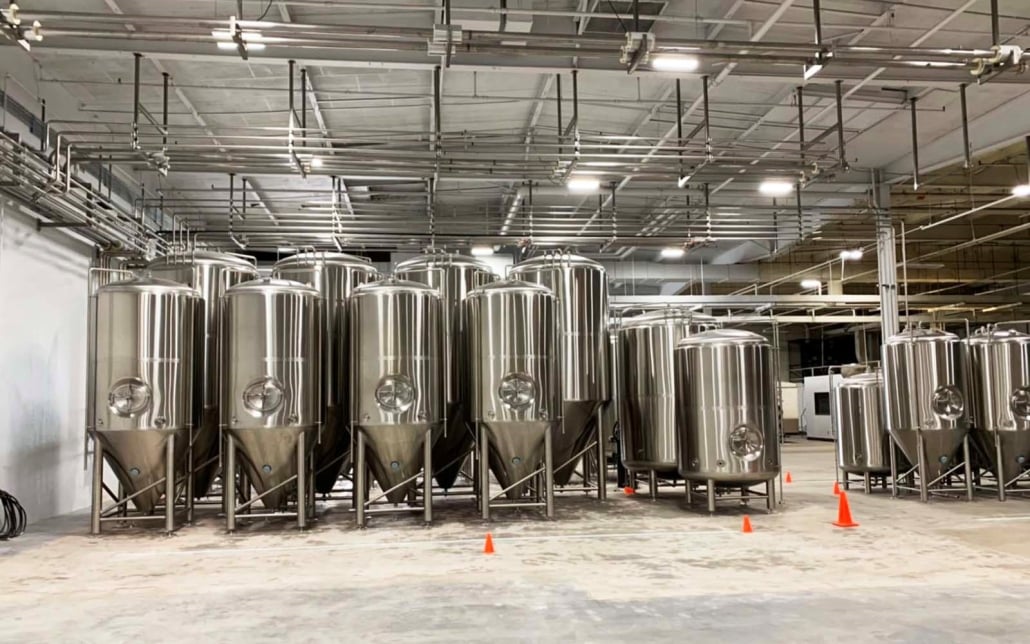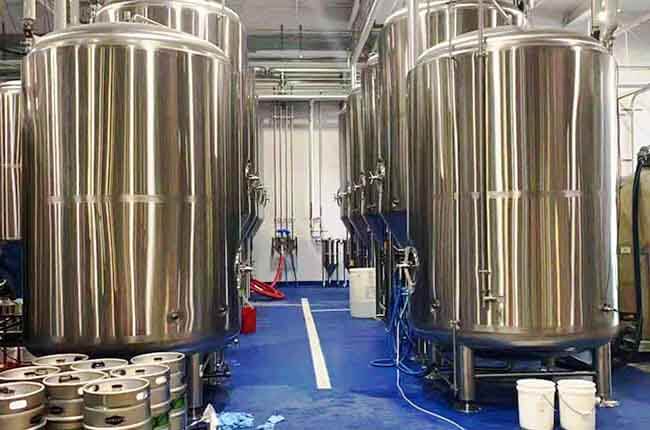Fermentation Tank Maintenance Strategy
A fermenter is a piece of brewery equipment used during the brewing process that enables large scale production of microorganismal metabolites. It is a sterilized, enclosed vessel that supports optimal conditions for the continued growth of yeast culture oxidization.
From the humblest, home-based brewing setup to the biggest commercial breweries, fermenters (sometimes spelled fermentors), also known as FVs, are one of the most essential components in a brewery – some might say it’s where all the magic happens! This is because the wort mix is held in fermentation vessels as it ferments into beer.
Let us introduce you to the proper care and maintenance required for any fermentation vessel. If you follow our easy to implement instructions, your FV will not only last for a long time but also produce exceptional beer time after time.
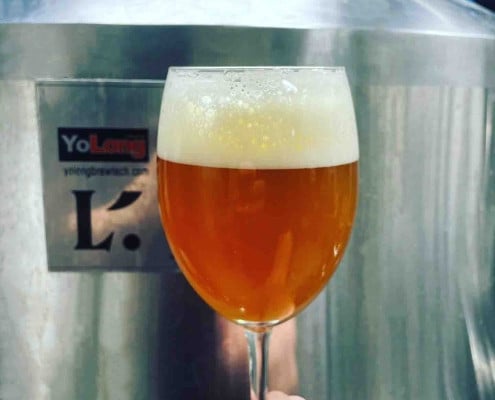
Part1: 11 tips for Fermenter maintenance to pay attention to
- What is the best way to hand clean a fermentation vessel?
- When cleaning the fermentation tank, use a soft bristle brush to scrub the surfaces. You should never use a hard bristle brush to scrape a fermentation tank’s interior and exterior. It is very important not to damage the parts of the vessel that comes into contact with the wort.
- How often should I get my fermentation vessel instruments checked?
- All the instrumentation that supports the FV needs to be checked and calibrated at least once every year.
- How do I effectively clean the fermenter’s electrical heating elements?
- All electric appliances, instruments, and sensors should be cleaned with extra care. If the solids stuck to the electric heating elements aren’t thoroughly cleaned, they can be scorched during the next brewing batch. This can cause unpleasant burnt flavor notes to appear in your beer batch.
- An element can be easily removed out of a FV and then it can be cleaned without damaging the rest of the electronics. By using copper scrubbing brushes, the harder stainless steel won’t be damaged.
- Never allow water or steam to come into direct contact with electronic instruments and sensors as this can cause condensation to form in the electric housing.
- How do I clean a fermentation vessel after using it to make a beer batch?
- The most useful feature of a FV is that the boiling temperatures the wort reaches occurs inside the vessel and this assists in the sanitation process. The heat of the boiling wort actually sanitizes the fermenter so there’s no need to clean it with chemicals.
- All you need to do after using the FV is clean it out very well with water after the beer is removed, and then use a soft cloth for wiping. The valves need to be disassembled and cleaned out, the elements have to be scrubbed and then your FV is all ready to go for your next beer batch.
- Always remember to clean a new fermenter
- If you have purchased a new YoLong FV, a deep clean is necessary before you can use it. This is because there is sometimes a tiny amount of welding staining or oil on the actual vessel and there could also be microscopic amounts of welding material on the inside jacket. A thorough cleaning of the vessel includes flushing out the jacket. Once the deep clean is complete, you can even use the vessel to provide sparge water during the mashing process.
Part2: Empty and Active Fermenter Maintenance
- If you are not going to be using your FV temporarily, it must be emptied and the remaining tank water and connecting pipes should be drained.
- The tank pressure should never exceed 0.17mpa during the fermentation process.
- During the elimination process, when the jacket passes the preheating steam, the steam inlet pressure must always be controlled within the working pressure range of the equipment (never exceeding 0.2mpa), or it will cause damage to the fermentation tank.
- Negative pressure in the fermentation tank is strictly prohibited during the cooling process and after emptying and solids elimination. This is to avoid pollution and possibly damaging the equipment.
- The tank pressure should always be maintained between 0.03 and 0.05mpa. This is to avoid contamination during the fermentation process.
- During each operation, the pressure in the air duct must be greater than that in the fermentation tank; otherwise, the liquid in the fermentation tank will flow back into the filter, blocking the filter core or invalidating the filter’s effectiveness.
If you have any questions about fermentation vessels and how they operate, please feel free to leave us a message.
Frequently Asked Questions (FAQ)
1) What is the ideal CIP cycle for a fermentation tank?
- Typical sequence: pre-rinse (ambient, 5–10 min) → caustic wash (1–2% NaOH at 60–70°C, 15–30 min) → intermediate rinse → acid pass (0.5–1% nitric/phosphoric blend, ambient–50°C, 10–15 min) → final rinse → sanitize (peracetic acid 150–250 ppm, 10 min, no-rinse). Validate with ATP swabs or plate counts.
2) How often should valves, gaskets, and fittings be replaced?
- Inspect elastomers every CIP; replace on a preventative schedule: PRV gaskets 6–12 months, TC gaskets 6–12 months (sooner if caustic/heat cycles are high), sample valve O-rings 6 months. Keep a labeled spare kit for each FV.
3) What pressures are safe during fermentation and CIP?
- Follow vessel nameplate. Many beer FVs are rated 1–2 bar (15–30 psi). The article’s operating guidance (0.03–0.05 MPa ≈ 4.3–7.2 psi) aligns with typical fermentation. During CIP with sprayballs, maintain 1.5–2.5 bar at the spray device to ensure wetting, but do not exceed tank design pressure.
4) How can I prevent negative pressure (vacuum) damage?
- Fit a vacuum relief valve, ensure PRV/VRV maintenance, avoid cold rinses after hot cycles without venting, and open a sterile air path (HEPA-filtered) during crash cooling or empty transfers.
5) What instrumentation needs routine calibration for a robust Fermentation Tank Maintenance Strategy?
- Pressure gauges, PRV set points, temperature probes (RTDs/Thermistors), level sensors, and dissolved oxygen (DO) meters. Calibrate temperature and pressure at least annually; verify PRV lift tests per manufacturer guidance.
2025 Industry Trends for Fermentation Tank Maintenance
- Data-driven maintenance: breweries adopt sensor dashboards logging temperature, pressure, PRV lifts, sprayball pressure, and CIP conductivity for proof-of-clean records.
- Water and chemical optimization: acid recovery loops and conductivity-controlled dosing cut chemical use 15–30%.
- Hygienic design upgrades: more 316L interiors, orbital welds, and crevice-free sample valves reduce biofilm risk and cleaning time.
- Sustainability KPIs: water-to-beer (fermentation & CIP) targets trending toward 3.0–3.8:1 in efficient craft operations.
- Safety-first PRV management: documented PRV/VRV testing programs to meet insurer and audit requirements.
Maintenance & Sustainability Benchmarks (2024–2025)
| KPI | Typical Baseline (2019) | Efficient Target (2025) | Notes / Sources |
|---|---|---|---|
| CIP water per FV (hL per cycle) | 3.5–6.0 | 2.0–3.0 | Brewers Association water efficiency guidance |
| Caustic concentration control variance | ±15% | ±5% | Conductivity + titration verification |
| Turnaround time FV (knockout-to-knockout) | 24–36 hrs | 16–24 hrs | Faster CIP/sanitize + cold crash optimization |
| PRV/VRV test interval | Ad hoc | Every 6 months | Insurer/auditor expectations |
| Micro fail rate post-CIP (% fails per 100 tests) | 3–5% | <1% | ASBC QA practices in place |
Authoritative references:
- Brewers Association (BA) Sustainability and Safety: https://www.brewersassociation.org/
- ASBC Methods of Analysis (micro verification, ATP): https://www.asbcnet.org/
- Master Brewers Association of the Americas (MBAA) Technical resources: https://www.mbaa.com/
Latest Research Cases
Case Study 1: Conductivity-Controlled CIP Reduces Chemical Use (2025)
Background: A 30-bbl brewery saw inconsistent FV cleaning due to manual chemical mixing and overuse of caustic.
Solution: Installed inline conductivity meters with automated dosing for caustic and acid loops; added ATP verification at manway and racking arm.
Results: 27% reduction in caustic consumption, 22% water savings per FV CIP, micro fail rate dropped from 3.2% to 0.6% over 6 months; payback in 9 months.
Case Study 2: PRV/VRV Preventive Program Avoids Tank Implosion (2024)
Background: After a near-miss vacuum event during rapid crash cooling, a regional brewery reviewed venting safeguards.
Solution: Introduced semi-annual PRV/VRV bench testing, added HEPA-vent lines with check valves, and interlocked crash-cool rate to verified vent status.
Results: Zero vacuum alarms for 12 months; insurance audit passed with commendation; no unplanned FV downtime attributable to venting.
Expert Opinions
- Dr. Charlie Bamforth, Distinguished Professor Emeritus, UC Davis; Quality Advisor, Sierra Nevada
“Cleanability and verification matter as much as recipe. A disciplined, measured CIP—validated by microbiological checks—protects flavor stability and brand reputation.” - Laura Burns, PhD, Director of Research and Development, Omega Yeast
“Residual caustic and inadequate rinsing can stress yeast and impact fermentation kinetics. Conductivity-based rinsing endpoints are a simple win for yeast health.” - Matt Stinchfield, Safety Consultant; Former BA Safety Ambassador
“Vacuum events are preventable. Maintain PRVs/VRVs, document tests, and manage crash rates. Your Fermentation Tank Maintenance Strategy isn’t complete without a venting SOP.”
Practical Tools/Resources
- Brewers Association Best Practices for CIP & Water Use: https://www.brewersassociation.org/
- ASBC Methods for Micro Verification (Rinse/Swab, ATP): https://www.asbcnet.org/
- MBAA CIP and Hygienic Design Webinars/Guides: https://www.mbaa.com/
- Ecolab Food & Beverage CIP Guides (PAA, caustic, acid): https://en-us.ecolab.com/offerings/clean-in-place-cip
- PRV/VRV Testing References (consult manufacturer manuals e.g., Pentair/Südmo, Anderson-Negele)
- Brewer’s Friend CIP calculators and logging templates: https://www.brewersfriend.com/
- OSHA Process Safety resources for pressure vessels: https://www.osha.gov/
Last updated: 2025-08-29
Changelog: Added 5-item FAQ, 2025 trends with benchmark table, two maintenance-focused case studies, expert viewpoints, and vetted tools/resources aligned with a Fermentation Tank Maintenance Strategy.
Next review date & triggers: 2026-02-28 or earlier if BA/ASBC release updated CIP or water benchmarks, major PRV/VRV standard changes occur, or internal micro fail rate exceeds 1% for two consecutive months.
Share this entry
Interested in learning more about Brewing Systems including additional details and pricing information? Please use the form below to contact us!
YOLONG BREWERY EQUIPMENT FAQS
- Commercial Brewery / Craft Brewery / Microbrewery / Nanobrewery
- What is The Difference Between Craft Beer and Industrial Beer?
- The Bespoke Differences In Custom Brewing Systems
- Everything You Need to Know About Kettle Souring
- How to Choose Brewing Equipment for Your business?
- How To Choose The-Best Partner To Build Your Commercial Microbrewing System?
- Two Detection Sensors That You Need To Use In Your Brewhouse System
- Remote Control Applications in Brewing Equipment/How does it work?
- How To Clean Your Brand New Brewery Tanks?

